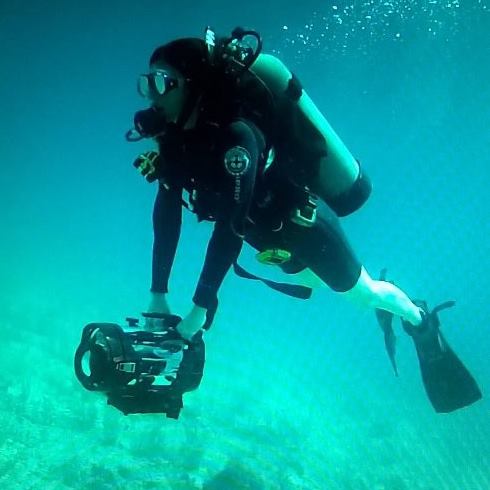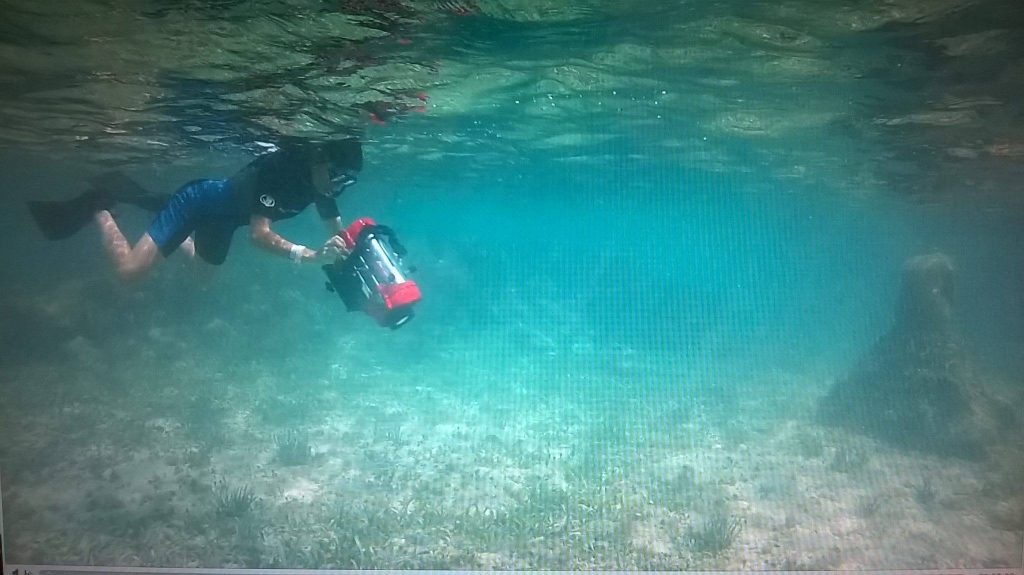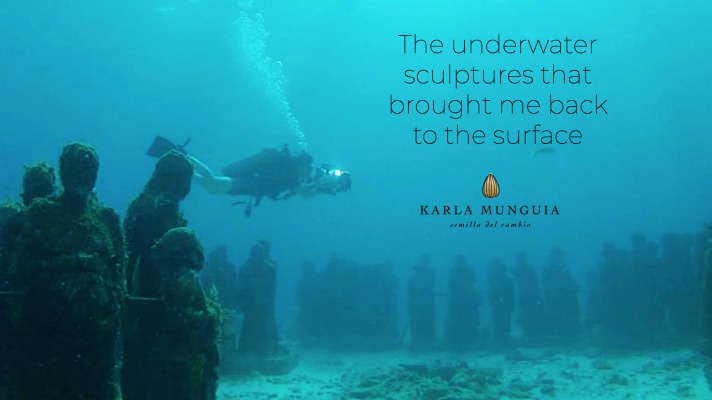Submerged at a depth of 10 meters, 473 sculptures made of marine concrete, helped me get back to the surface after putting an end to the toughest relationship.
Last week, I shared the story about one of my most difficult experiences. (If you missed it, you can find it here, it’ll help you find this blog more exciting). And I promised that today I will tell you all about MUSA, the Underwater Museum of Art.
This happy story begins with an email. A few days before I decided to end my relationship with Lord Voldemort, an acquaintance sent me an email. “Hi, Karla, do you know this museum?”. I opened the email to be surprised by an image of a scuba diver floating around sculptures lying on the ocean floor.
“Where is this place?!”, I thought. “It must be Indonesia”. To my surprise, when I googled “underwater sculptures”, I found MUSA, the Underwater Museum of Art, located in Cancun and Isla Mujeres, Mexico. I finally found something that made sense in my life!
I sent and email to the Director and Co-Founder of the Museum, Roberto Díaz Abraham (I will tell you more about him in another blog), introduced myself and presented the idea of making a documentary about MUSA.
Roberto replied: “You’re very welcome to come visit us. We’ve had filming crews from the BBC, Discovery Channel and many other international networks”. And I thought I just discovered an unknown place… I felt ashamed as a Mexican for not knowing about this Museum, but mostly as a scuba diver.
What did I do to visit this museum when I was “trapped” in a relationship with this man? Well, as soon as I packed my bags and left him, money started coming to me in abundance, so the first thing I did was book a flight to Cancun.
Diving in
Back then I stopped filming and I hadn’t used a video camera for five years, but, to my relief, a dear of friend of mine who just returned from filming a documentary for 9 months on a raft, had exactly the same camera that I used in South Africa for three years: the Sony V1. And there’s more. He also had the housing, so when I told him all about MUSA, he didn’t hesitate to lend me his full gear.

Paco Bernal lend me his camera and housing so I could film MUSA. Picture: Guillermo Durán, 2015.
I landed in Cancun with my scuba diving equipment, camera, housing and tripod at 4:00 am of July 6th, 2015. (Yes, I remember the date clearly). A few hours later, I met with Roberto for breakfast. Meeting him was like seeing a friend from years. We instantly “clicked” and to this day, he remains to be a dear friend.
We talked about my proposal, the idea of filming as much as I could during that week, both underwater and at the workshop. I interviewed Roberto, Jaime González Cano, Director to the National Park of Isla Mujeres, Punta Cancún and Punta Nizuc and Elier Amado Gil, a talented artist from Cuba who recently joined MUSA.
Roberto arranged my visit to the largest “room” of the Museum, located in Isla Mujeres, the next day.
I saw so many pictures online, that I wanted to make sure that those were real, not a photoshop trick.

Filming in Punta Nizuc. MUSA has 2 underwater rooms located in Cancun: Punta Sam and Punta Nizuc. The sculptures are in shallow waters, so you can see them from the surface with a snorkel and a mask. Free diving is not permitted by the National Park.
The Silent Evolution
We boarded a big boat equipped with tanks and headed to this unique museum. The journey seemed eternal, specially when I had the urgency of diving and filming. We crossed a lagoon, then a channel surrounded by beautiful mangroves and kept moving until we saw the ocean and, not too far, Isla Mujeres. My friend Guillermo, a scuba diver that I’ve known since 2003, joined me in this exciting scouting tour.
The first piece I wanted to see was “The Silent Evolution”, by Jason deCaires Taylor with 450 sculptures based on real people that he picked to be his models. And let me tell you, modeling for Jason is a huge deal. He covers the entire body with a special mix to make the mold that will later be filled with marine concrete. In the meantime, the models have to stay still for hours while breathing through a straw. If they were capable of posing for hours, barely breathing, that was reason enough for me to be patient and enjoy the boat ride.
We finally arrived. I equipped myself so fast, that I forgot that the last time I went scuba diving was 6 years before that day. It seemed like I went scuba diving the day before. I jumped to the water with such a rush of excitement that it felt like I was about to discover the most precious treasure on the Planet. (And, yes, it was and still is).
“Where’s The Silent Evolution!?” I screamed to the guide while he was getting ready to jump.
“You’re floating right on top of it!”, he replied.
The Art of Conservation
This will be the first of many blogs about MUSA, as I can’t tell you all about it in one. This place deserves many blogs.
But, it is important to tell you in this first approach to MUSA, that its purpose is to save corals and reefs in the Mexican Caribbean. Every year, millions of tourists from around the world come to Cancun and Isla Mujeres, which is great. What’s not great is that many of them go scuba diving for the first time on top of delicate reef corals that have been around for millions of years.
So, what happens? Because they’re not experienced divers, they can’t control their buoyancy, so they shake their hands and legs like if they were falling from a cliff and hit the reefs by mistake. But, there are some people who intentionally grab corals to take as “souvenirs”. The deterioration of these reefs was so evident, that Roberto, Jaime and Jason had the idea of creating an artificial reef with this Museum to reduce the number of people visiting natural reefs. And it worked.
In 2015, around 250,000 tourists that visited Cancun preferred to visit MUSA instead of visiting natural reefs.
This year, MUSA is celebrating its 11th anniversary, enough time for the sculptures to be decorated by corals. I’ve always found extraordinary the artistic bond in this unique Museum between men and nature. Men brought the “canvas” through these sculptures while marine life brings color and shapes to them. On the next blog, you’ll “scuba dive” with me so you can see how they look like at night.
What about the documentary?
It took me a week to interview talented, committed and wonderful people. People that, to this day, remain close to my heart. I haven’t finished the documentary, but this blog might be the motivation I needed to get back to it. In the meantime, I would like to share a teaser I put together with my good friend and producer Manuel Hernández Stumpfhauser, who flew to Cancun just to fly his drone around The Silent Evolution and the stunning beaches in Cancun. You’ll also see some footage that I managed to film underwater.
When I got back home after my trip to Cancun, MUSA kept “calling” me in my thoughts. I felt like I was in the wrong town, working as a realtor, selling apartments, that wasn’t me!
I grabbed my phone and called Roberto. “I just quit my job, I can move to Cancun anytime, it’s your call”… “I just got an opening, the salary is “this”, do you take it?”… “I’ll take it”.


